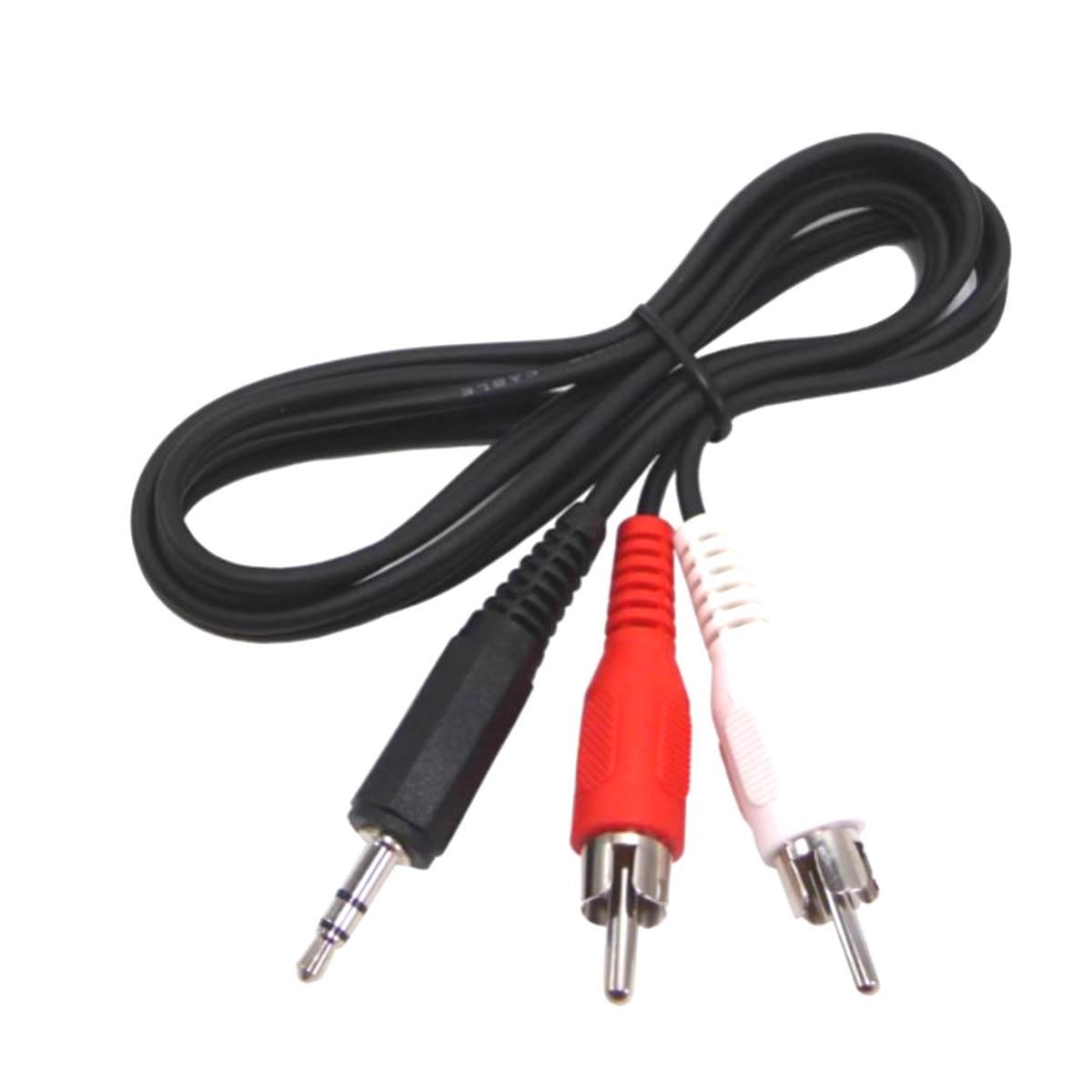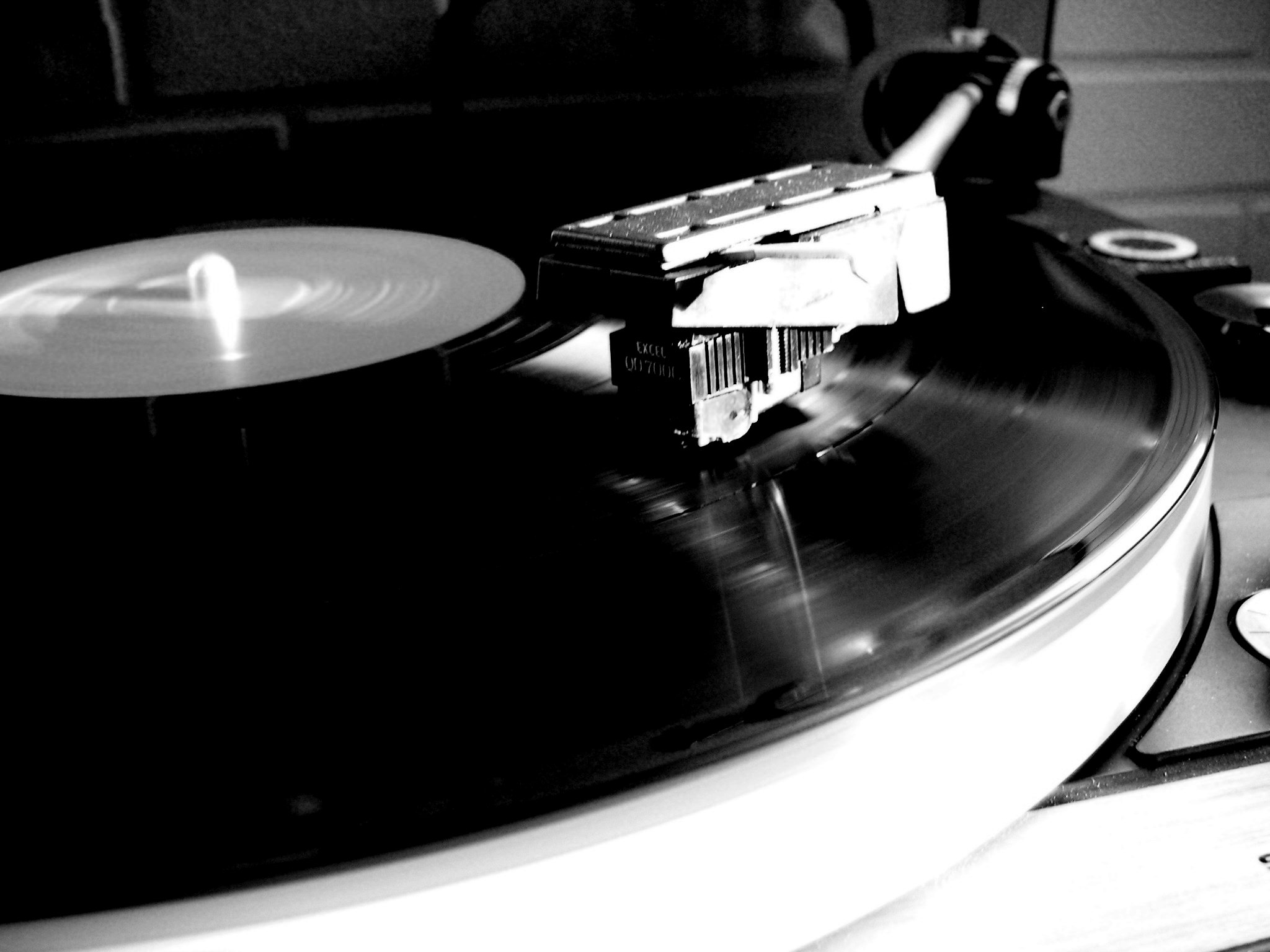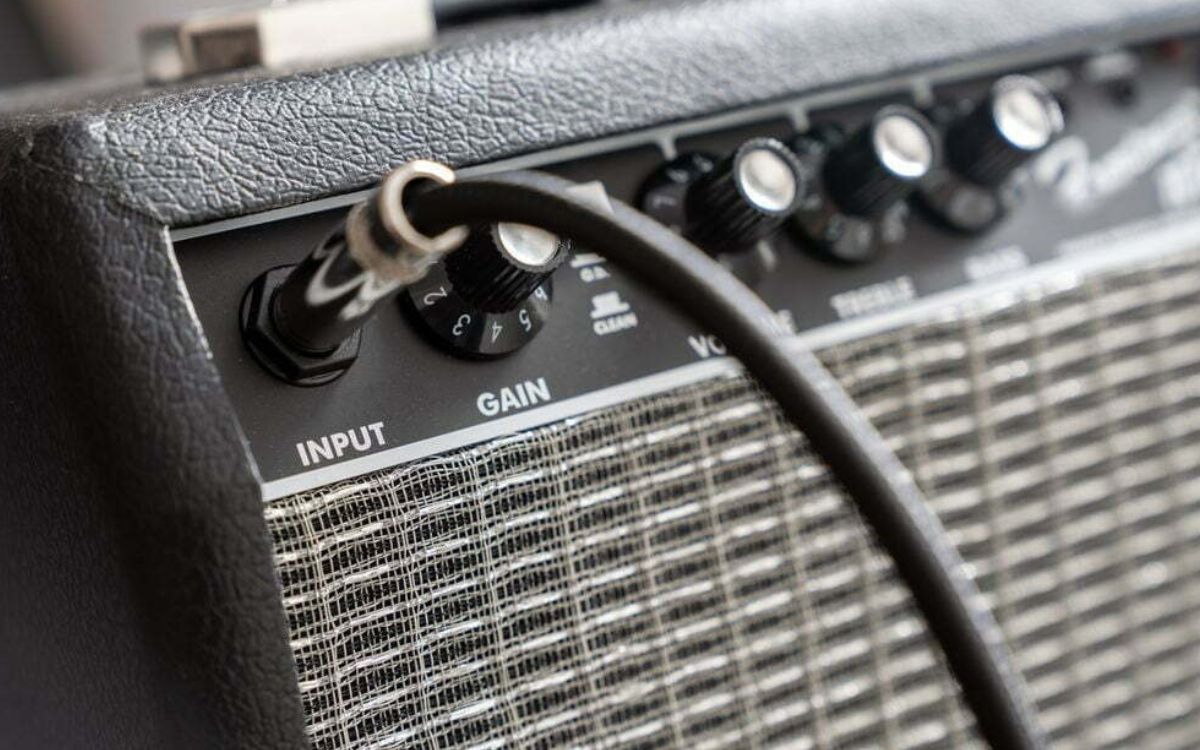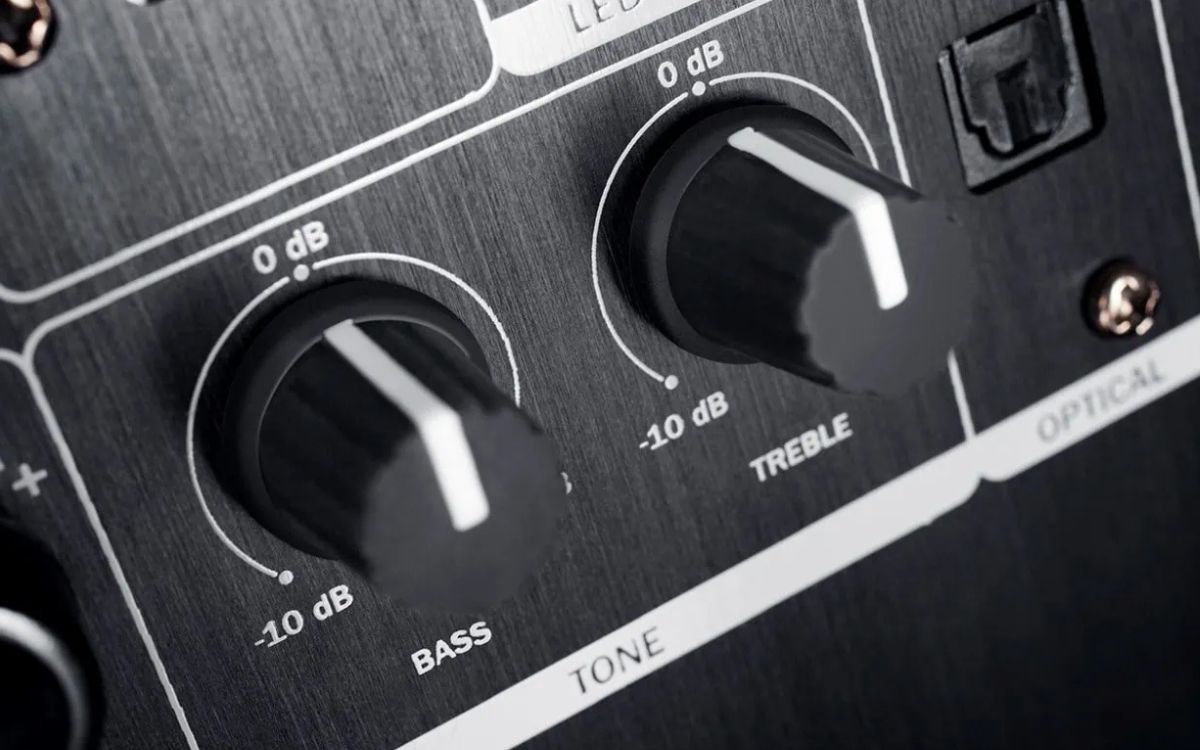Home>Devices & Equipment>Subwoofer>What Does A Subwoofer Do


Subwoofer
What Does A Subwoofer Do
Modified: February 18, 2024
Discover the role of a subwoofer in your audio setup and how it enhances bass frequencies. Explore the functions and benefits of a subwoofer for a richer, more immersive sound experience.
(Many of the links in this article redirect to a specific reviewed product. Your purchase of these products through affiliate links helps to generate commission for AudioLover.com, at no extra cost. Learn more)
Table of Contents
Introduction
Welcome to the world of subwoofers! If you’re a music enthusiast, a movie lover, or someone who wants to elevate their audio experience, then you’re in the right place. A subwoofer is a device that has the power to transform the way you listen to sound. Whether you’re looking to feel the thunderous rumble of a movie explosion or experience the deep, resonant basslines of your favorite music, a subwoofer can deliver that immersive and impactful audio experience.
But what exactly is a subwoofer? At its core, a subwoofer is a specialized loudspeaker designed to reproduce low-frequency audio. It focuses on delivering deep bass tones, typically ranging from 20Hz to 200Hz, which is lower than what most conventional speakers can produce. This ability to reproduce low-frequency sounds sets subwoofers apart and gives them their distinct role in an audio setup.
So, why would someone need a subwoofer? Well, the function of a subwoofer goes beyond just adding extra “boom” to your audio. It plays a crucial role in enhancing the overall audio experience by providing depth, dimension, and realism to the sound you hear. Whether you’re watching a movie, listening to music, or playing video games, a well-integrated subwoofer can make a world of difference.
In the following sections, we’ll dive deeper into the functionality of subwoofers, explore how they enhance low-frequency sounds, and discuss their impact on home theater systems. We’ll also cover important considerations when choosing a subwoofer and the optimal placement for maximum audio performance. So, let’s embark on this sonic journey and discover the world of subwoofers together!
Definition of a Subwoofer
Before we delve into the intricacies of subwoofers, let’s start by understanding what exactly a subwoofer is. In its simplest form, a subwoofer is a specialized loudspeaker designed specifically to reproduce low-frequency audio signals. Unlike regular speakers that cover a wide range of frequencies, subwoofers focus on the lower end of the audio spectrum, typically ranging from 20Hz to 200Hz. This emphasis on low frequencies allows subwoofers to reproduce deep bass sounds with clarity and power.
Subwoofers are typically larger in size compared to other speakers, and this is because they need to move more air to produce those deep bass tones. The larger the driver or the cone of the subwoofer, the more air it can displace, resulting in a more powerful bass response. The drivers themselves are made of specialized materials, such as rigid yet lightweight cones and powerful magnets, to accurately reproduce low-frequency sounds.
Subwoofers can either be active or passive. An active subwoofer has its built-in amplifier, meaning it doesn’t require an additional external amplifier to power it. On the other hand, a passive subwoofer relies on an external amplifier to provide the necessary power. Active subwoofers are more commonly used due to their convenience and ease of setup.
It’s important to note that subwoofers are not standalone speaker systems. They are designed to complement and enhance the performance of existing audio setups. They are typically used in conjunction with other speakers, such as bookshelf speakers or floor-standing speakers, to create a balanced and immersive audio experience.
Now that we have a clear understanding of what a subwoofer is, let’s explore its function and the role it plays in enhancing the audio experience.
Function of a Subwoofer
The primary function of a subwoofer is to reproduce low-frequency sounds that regular speakers are unable to handle. It fills in the gaps in audio reproduction by focusing on the bass frequencies, allowing you to experience a full and balanced sound. Let’s explore the key functions of a subwoofer in more detail:
Enhancing Low-Frequency Sounds: One of the main functions of a subwoofer is to reproduce deep, powerful bass tones that add richness and impact to your audio. These low-frequency sounds, such as the rumble of thunder, the thumping of a kick drum, or the growl of an engine, are typically felt more than they are heard. A subwoofer brings these sounds to life, creating a more immersive and realistic audio experience.
Creating Depth and Dimension in Audio: By emphasizing the low frequencies, a subwoofer adds depth and dimension to your audio. It allows you to hear the subtle nuances of a bass guitar, the low register of a vocalist, or the booming effects of a movie soundtrack. This creates a more engaging and lifelike listening experience, making you feel like you’re right in the midst of the action.
Impact on Home Theater Systems: Subwoofers play a vital role in home theater setups. They complement the performance of your surround sound system by delivering the low-frequency effects in movies, such as explosions, crashes, and deep rumbling bass. This adds a visceral element to your home theater experience, making it feel more like a cinematic adventure.
Integration with Other Speakers: Subwoofers work in conjunction with other speakers to create a well-balanced audio setup. While the main speakers handle the mid-range and high-frequency sounds, the subwoofer takes care of the low-end frequencies, ensuring that all parts of the audio spectrum are faithfully reproduced. This integration results in a cohesive and immersive soundstage.
By fulfilling these functions, subwoofers enhance the overall audio experience and bring a new level of enjoyment to your music, movies, and games. In the next sections, we’ll dive deeper into how subwoofers enhance low-frequency sounds and discuss important considerations when choosing a subwoofer.
Enhancing Low-Frequency Sounds
One of the key functions of a subwoofer is to enhance low-frequency sounds, allowing you to experience the full impact of deep bass tones. By focusing on frequencies below what regular speakers can reproduce, subwoofers bring a sense of richness and power to your audio. Let’s take a closer look at how subwoofers accomplish this:
Reproducing Sub-Bass Frequencies: Subwoofers are specially engineered to reproduce sub-bass frequencies, which typically range from 20Hz to 80Hz. These are the deep, visceral tones that you feel as much as you hear. The large driver or cone of a subwoofer, combined with its dedicated amplifier, allows it to accurately reproduce these ultra-low frequencies, delivering a true low-end audio experience.
Improving Sound Accuracy: By offloading the low-frequency sounds to a dedicated subwoofer, the main speakers are relieved of the task of reproducing those deep bass tones. This improves their overall sound accuracy and clarity, as they can focus on handling mid-range and high-frequency sounds. With a subwoofer handling the low end, the entire audio system can operate in a more efficient and balanced manner.
Creating a Balanced Soundstage: Subwoofers play a crucial role in creating a well-balanced soundstage. They ensure that all parts of the audio spectrum are faithfully reproduced, from the highest highs to the deepest lows. By adding depth and weight to the low end, subwoofers help to create a three-dimensional audio experience that envelopes you in sound. This balanced soundstage enhances the realism of your music, movies, and games.
Enhancing Musical Nuances: Subwoofers bring out the subtle nuances in music by reproducing the low-frequency elements with precision. You’ll be able to hear the deep bass notes of a double bass, the rich harmonics of a synthesizer, or the power and impact of a bass drum. This level of detail and clarity adds depth and texture to your music, allowing you to appreciate it in a whole new way.
Whether you’re listening to music, watching a movie, or enjoying a gaming session, a subwoofer adds a new dimension to your audio experience by enhancing the low-frequency sounds. It allows you to feel the music and immerse yourself in the cinematic action. In the next section, we’ll explore how subwoofers create depth and dimension in audio and discuss their impact on home theater systems.
Creating Depth and Dimension in Audio
Subwoofers play a crucial role in creating depth and dimension in audio, allowing you to experience a more immersive and realistic soundstage. By focusing on the low frequencies, subwoofers bring a new level of depth and impact to your music, movies, and games. Let’s delve deeper into how subwoofers accomplish this:
Emphasizing Low-End Impact: Subwoofers excel at reproducing the deep bass tones that add impact and power to your audio. They bring out the low-frequency effects, such as explosions, crashes, or rumbling thunder, with incredible clarity and intensity. This provides a visceral and dynamic experience, making you feel as if you’re right in the heart of the action.
Enhancing Dynamics and Realism: Low-frequency sounds contribute significantly to the dynamics and realism of audio. Subwoofers ensure that these important elements are faithfully reproduced. Whether it’s the thumping bass line in your favorite song or the rumbling footsteps of a monster in a video game, a subwoofer adds a level of physicality and realism that enhances your overall audio experience.
Adding Texture and Detail to Music: Music is enriched with subtle bass elements that give depth and texture to the overall composition. A well-integrated subwoofer allows you to hear and appreciate these nuances. You’ll experience the full impact of bass guitar notes, the resonance of a cello, or the deep tones of an organ, adding a layer of complexity and richness to your music listening.
Enhancing Movie Soundtracks: Subwoofers are a crucial component of any home theater system. They bring movie soundtracks to life by reproducing the low-frequency effects that create a sense of realism and immersion. With a subwoofer, you can feel the rumble of an approaching train, the explosions in an action sequence, or the powerful roar of a dinosaur in a Jurassic adventure.
Creating Spatial Imaging: Subwoofers help in creating a three-dimensional soundstage. By accurately reproducing the low-end frequencies, subwoofers add depth and dimension to the audio. This allows you to perceive sounds coming from different directions, enhancing your overall sense of immersion and creating a more realistic listening experience.
With their ability to add depth, impact, and dimension to audio, subwoofers elevate your listening experience to new heights. Whether you’re enjoying music, watching a movie, or playing games, a well-integrated subwoofer brings out the richness and realism in sound. In the next section, we’ll explore the impact of subwoofers on home theater systems and discuss how they integrate with other speakers.
Impact on Home Theater Systems
Subwoofers have a significant impact on home theater systems, enhancing the overall audio experience and bringing a cinematic feel to your living room. When integrated properly, subwoofers can truly transform your home theater setup. Let’s take a closer look at the impact subwoofers have on home theater systems:
Rumbling Low-End Effects: Subwoofers excel at reproducing the low-frequency effects that are essential to the immersive movie-watching experience. Explosions, thunderstorms, or deep rumbling sounds are faithfully reproduced with power and impact, making you feel like you’re inside the action. The subwoofer’s ability to deliver these low-end effects adds depth and realism to the audio in a way that regular speakers simply cannot achieve.
Balanced Sound Distribution: The integration of a subwoofer into a home theater system ensures a balanced distribution of sound across the frequency range. While regular speakers handle mid-range and high-frequency sounds, the subwoofer takes care of the bass frequencies. This balanced sound distribution creates a more immersive soundstage, allowing you to hear every detail of dialogue, music, and special effects with clarity and accuracy.
Improved Dialog Clarity: In a home theater setting, dialog clarity is of utmost importance. The addition of a subwoofer helps alleviate the burden on the main speakers to reproduce low-frequency sounds, allowing them to focus on delivering clear and intelligible dialog. By offloading the low-end frequencies to the subwoofer, you can enjoy enhanced dialog clarity even during intense action scenes or explosive moments.
Seamless Surround Sound: Subwoofers play a vital role in creating a seamless surround sound experience. They work in harmony with the other speakers in your setup to ensure that the low-end frequencies are properly distributed throughout the room. This integration results in a cohesive and immersive surround sound field, where sounds pan smoothly from speaker to speaker, enveloping you in a realistic audio environment.
Elevating Music and Gaming: Subwoofers are not solely limited to enhancing movie soundtracks. They also have a profound impact on music listening and gaming. When you’re enjoying your favorite music, a subwoofer adds depth and richness to the bass lines, making them more impactful and engaging. In gaming, subwoofers bring realism to explosions, gunfire, and other low-frequency effects, intensifying the immersive gaming experience.
It’s important to note that proper placement and calibration of the subwoofer are crucial to achieving the best performance within a home theater system. Positioning the subwoofer in an optimal location and fine-tuning its settings to blend seamlessly with the other speakers will ensure a cohesive and powerful audio experience.
By adding depth, impact, and realism to the audio, subwoofers greatly enhance the overall immersive experience of a home theater system. In the next section, we’ll discuss important considerations when choosing the right subwoofer for your setup.
Integration with Other Speakers
Integration with other speakers is a critical aspect when incorporating a subwoofer into your audio setup. Subwoofers work in harmony with other speakers to create a well-balanced and immersive sound experience. Let’s explore how subwoofers integrate with other speakers:
Crossing Over Frequencies: Subwoofers and main speakers employ a technique called “crossover” to ensure a smooth integration of frequencies. The crossover determines the point at which frequencies are redirected from the main speakers to the subwoofer. This ensures that the subwoofer reproduces the low-end frequencies, while the main speakers handle the mid-range and high frequencies. The crossover point should be set according to the characteristics of the speakers and the desired sound balance.
Aligning Sound Timbre: Timbre refers to the tonal quality and character of sound produced by different speakers. It’s important for the subwoofer to align its sound timbre with the main speakers to create a seamless and cohesive audio experience. Matching the tonal characteristics, such as the clarity, warmth, and tonal balance, ensures that the audio blends harmoniously across the frequency spectrum. This alignment results in a more natural and immersive soundstage.
Phase Alignment: Phase alignment is crucial for proper integration between the subwoofer and the main speakers. When sound waves from the subwoofer and the main speakers are out of phase, they can cancel each other out or create unwanted peaks and nulls in the frequency response. By adjusting the phase settings, you can align the sound waves, ensuring that they reinforce each other instead of interfering. This results in a more accurate and balanced audio reproduction.
Positioning Considerations: Proper placement of the subwoofer and other speakers is key to achieving optimal integration. Ideally, the subwoofer should be placed in a central position within your audio setup, allowing it to distribute low-frequency sounds evenly throughout the room. The main speakers should be positioned in a way that complements the subwoofer, creating a cohesive soundstage and maintaining proper imaging. Experimenting with different placements and configurations can help you find the optimal setup for your listening environment.
Calibration and Fine-tuning: Once the subwoofer and the other speakers are properly positioned, calibration and fine-tuning become essential. This involves adjusting the volume level, crossover frequency, phase settings, and equalization to achieve a seamless integration. Calibration tools, such as auto-setup systems or room correction software, can help optimize the performance of the subwoofer and other speakers by analyzing the room acoustics and making appropriate adjustments.
System Expandability: Subwoofers offer the flexibility to expand your audio system as needed. Many subwoofers come with multiple inputs and outputs, allowing you to easily connect additional speakers or subwoofers. This expandability ensures that your audio setup can adapt to changing needs or room sizes, providing the possibility of creating a more immersive sound experience in larger spaces.
By understanding the principles of crossover, timbre alignment, phase, and proper positioning, you can seamlessly integrate a subwoofer with other speakers to create an immersive and well-balanced audio system. In the final section, we’ll discuss important considerations when choosing the right subwoofer for your specific needs.
Choosing the Right Subwoofer
When it comes to choosing the right subwoofer, there are a few key factors to consider to ensure that it meets your specific needs and enhances your audio setup. Let’s explore some important considerations to keep in mind when selecting a subwoofer:
Room Size and Acoustics: The size of your room plays a role in determining the appropriate size and power of the subwoofer. Larger rooms require subwoofers with more power and larger drivers to effectively fill the space with deep bass. Additionally, consider the acoustics of the room. Hard surfaces like bare walls and floors can contribute to sound reflections, while soft furnishings can help absorb and dampen sound. Understanding your room’s characteristics will help you choose a subwoofer that complements its acoustic properties.
Power Output and Frequency Response: The power output of a subwoofer is an important consideration. Look for a subwoofer that has sufficient power to produce the desired volume level and impact without distortion. Additionally, pay attention to the subwoofer’s frequency response, which indicates the range of frequencies it can reproduce. Ideally, you want a subwoofer with a low-frequency response that extends to the deep bass tones you wish to experience, ensuring a rich and detailed representation of low-frequency audio.
Integration with Existing Speakers: Consider how well the subwoofer integrates with your existing speakers. Take note of the crossover frequency range that the subwoofer can accommodate to ensure compatibility with your main speakers. It’s important that the subwoofer and main speakers can work together seamlessly to provide a balanced and cohesive soundstage. Look for subwoofers that offer adjustable crossover settings and phase controls to fine-tune the integration.
Type of Subwoofer: There are different types of subwoofers available, including sealed, ported, and powered subwoofers. Sealed subwoofers are known for their tight and accurate bass response, while ported subwoofers provide greater efficiency and output. Powered subwoofers have built-in amplifiers, eliminating the need for an external amplifier. Consider your specific requirements and preferences to determine which type of subwoofer is best suited for your needs.
Budget: Set a budget for your subwoofer purchase and aim to find the best option that fits within that budget. Subwoofers come in a range of prices, and while more expensive models may offer additional features or higher performance, there are often great options available at various price points. Determine your priorities and make sure to balance performance, quality, and price to find the subwoofer that provides the best value for your money.
Brand Reputation and Reviews: Research the reputation of different subwoofer brands and read reviews from experts and users. A respected brand with a track record of producing quality subwoofers is more likely to provide a reliable and satisfactory experience. Reading reviews can give you valuable insights into the performance, reliability, and features of various subwoofer models, helping you make an informed decision.
Personal Listening Preferences: Consider your personal listening preferences and the type of audio content you plan to enjoy on your subwoofer. If you’re a music lover, look for a subwoofer that provides accurate and detailed bass reproduction. For movie enthusiasts, a subwoofer with high power output and the ability to reproduce deep, rumbling bass would be ideal. Understanding your specific preferences will help you choose a subwoofer that delivers the audio experience you desire.
By taking into account factors such as room size, power output, integration, price, and personal preferences, you can choose a subwoofer that perfectly complements your audio system and enhances your overall listening experience. Remember to conduct thorough research, listen to demos if possible, and make an informed decision based on your specific needs and budget.
Placement Considerations
The placement of your subwoofer is a crucial factor in achieving optimal performance and integration with your audio system. Improper placement can result in imbalanced bass response or unwanted vibrations. Here are some important considerations to keep in mind when placing your subwoofer:
Central Positioning: Ideally, place the subwoofer in a central location within your room, as close to the main listening area as possible. This allows for more even distribution of low frequencies throughout the space and helps maintain a cohesive soundstage. Placing the subwoofer near a wall or corner can further enhance bass response due to the boundary effect, although adjustments may be necessary to account for room resonances.
Experimentation and Room Calibration: Every room has its unique characteristics that can impact the performance of a subwoofer. Experiment with different subwoofer placements to find the position that yields the best bass response and integration with your main speakers. Utilize room calibration tools or manual adjustments to fine-tune the subwoofer’s settings based on your room’s acoustics.
Avoiding Obstructions: Ensure that the subwoofer is not obstructed by furniture or other objects that could impede sound waves. Keep it elevated off the floor to reduce vibrations and resonance with the surface. If necessary, use isolation pads or stands to further decouple the subwoofer from the floor to minimize unwanted vibrations and optimize bass response.
Phase Alignment: Proper phase alignment between the subwoofer and the main speakers is vital for seamless integration. Incorrect phase settings can result in cancellations or peaks in the frequency response. Adjust the phase control on the subwoofer or AV receiver to align the subwoofer’s output with the main speakers, ensuring that the sound waves reinforce each other instead of interfering.
Consider Room Modes: Room modes are specific resonances that can occur in certain areas of your room, resulting in uneven bass response. Experiment with subwoofer placement to minimize the impact of these room modes. Moving the subwoofer within the room and adjusting the crossover and phase settings can help mitigate the effects of room modes and improve the overall bass performance.
Trial and Error: Achieving the optimal subwoofer placement often involves some trial and error. Don’t be afraid to move the subwoofer around and make adjustments to find the best possible position. Listen to different types of audio content and pay attention to the bass response and integration with the main speakers. Trust your ears and make the necessary adjustments until you achieve a balanced and immersive sound experience.
Keep in mind that the best placement for your subwoofer may vary depending on the specific characteristics of your room and audio system. Experimentation and careful listening are key to achieving the ideal placement that maximizes the performance and integration of your subwoofer. Taking the time to properly position your subwoofer will ensure that you enjoy the full benefits of deep, impactful bass in your audio setup.
Conclusion
Subwoofers are truly game-changers when it comes to audio systems. Their ability to reproduce low-frequency sounds with power and precision allows for a truly immersive and impactful listening experience. Whether you’re a music enthusiast who wants to feel the deep bass lines or a movie lover looking to recreate the rumbling explosions of a cinematic experience, a subwoofer is an essential component.
In this article, we’ve explored the definition and function of subwoofers. We’ve seen how they enhance low-frequency sounds and create depth and dimension in audio. We’ve also discussed their impact on home theater systems, highlighting the seamless integration with other speakers. The considerations for choosing the right subwoofer, such as room size, power output, and integration, were addressed as well.
Placement considerations were also discussed, emphasizing the importance of finding the optimal position for your subwoofer to maximize its performance and integration with the rest of your audio system. We learned that experimentation and room calibration play a vital role in achieving the best possible sound experience.
Overall, subwoofers enhance the audio experience in ways that regular speakers cannot. They bring the deep, resonant bass tones to life, adding impact, depth, and realism to music, movies, and games. By choosing the right subwoofer, integrating it seamlessly with other speakers, and placing it correctly in your room, you can create a balanced and immersive audio setup that truly captivates your senses.
Remember, finding the perfect subwoofer setup may require some trial and error, as each room and listening environment is unique. Trust your ears and take the time to fine-tune your system to achieve the best results. With the right subwoofer and careful consideration of its placement, you can elevate your audio experience to new heights and truly feel the power of deep bass in every note, rumble, and explosion.











